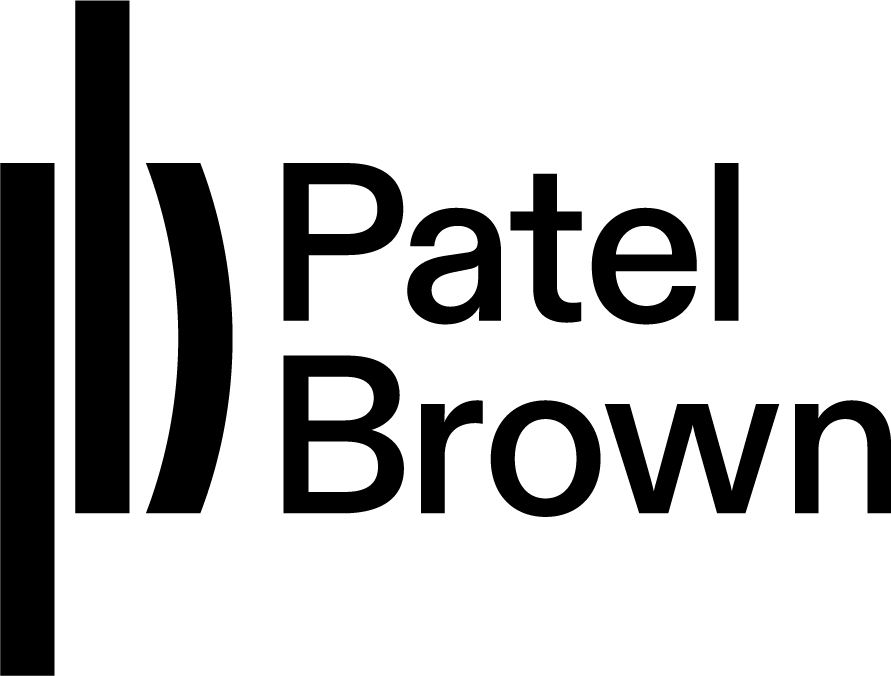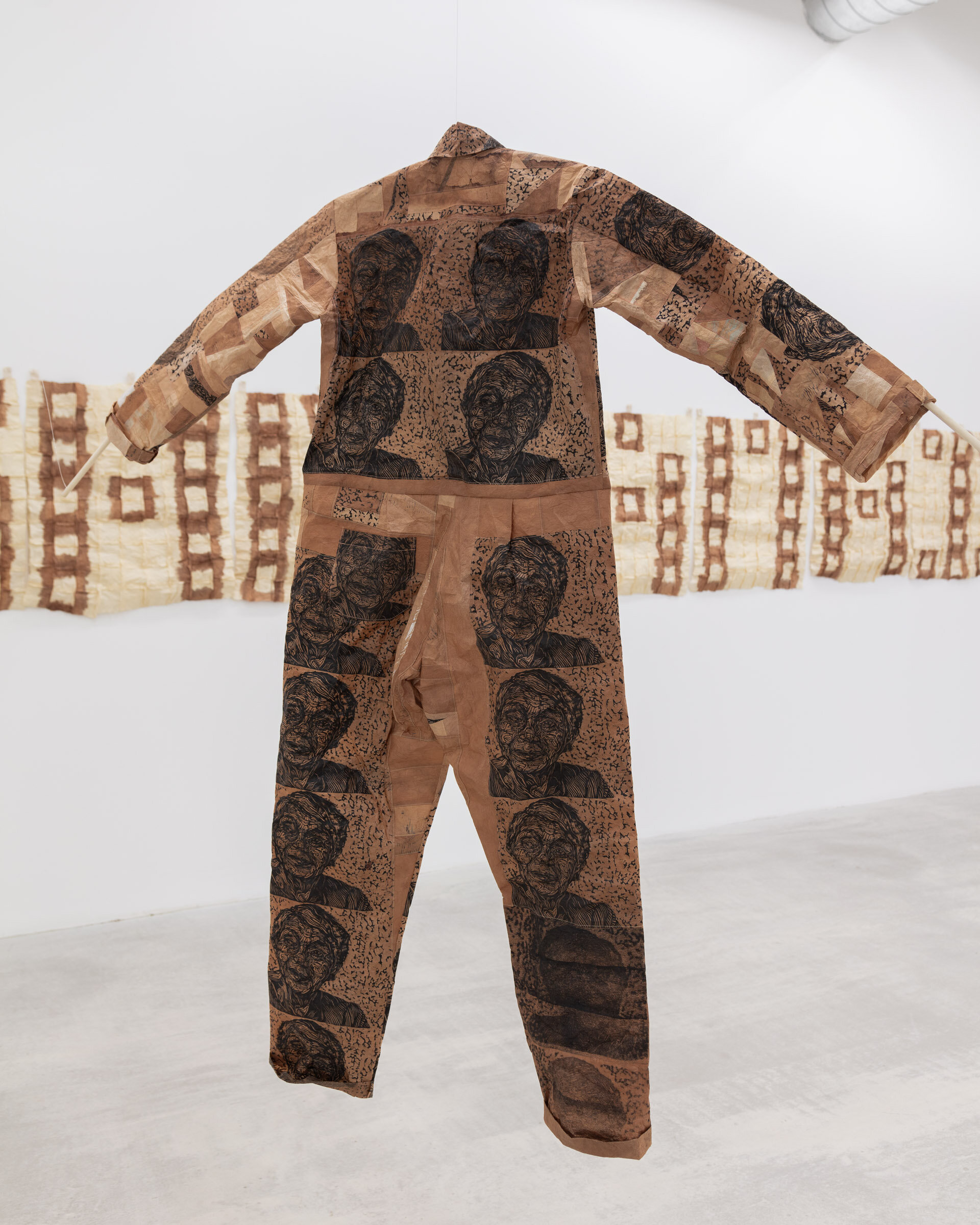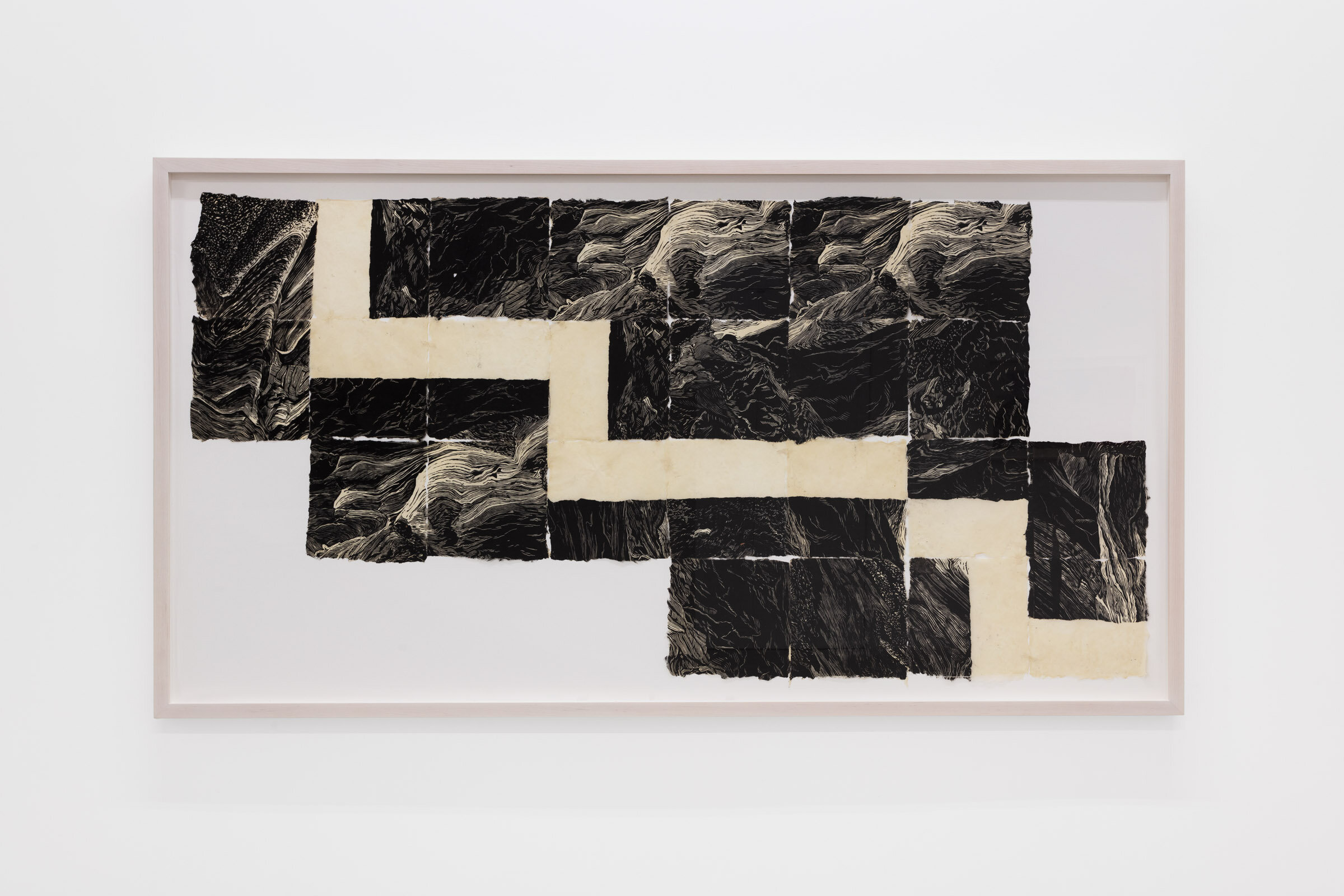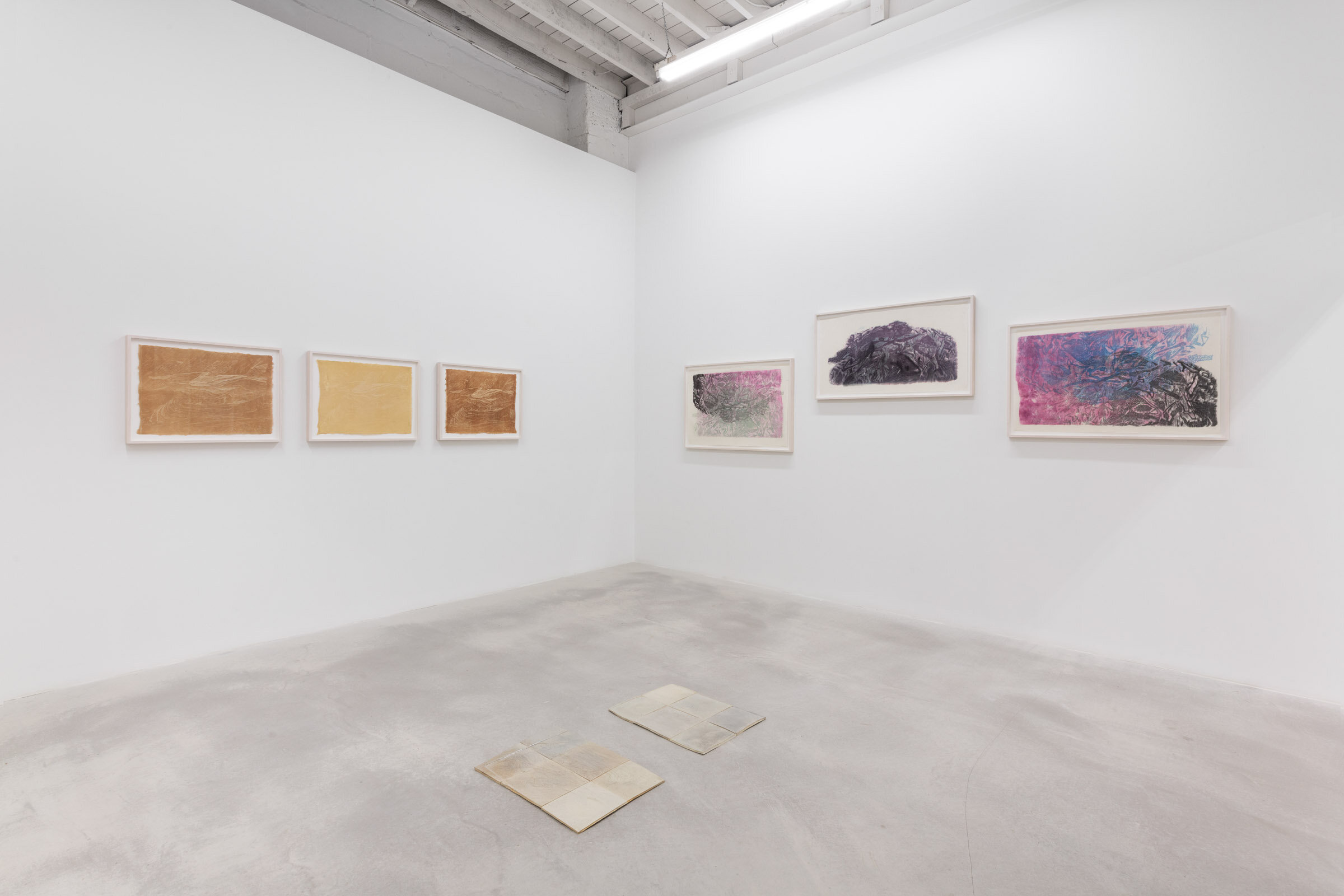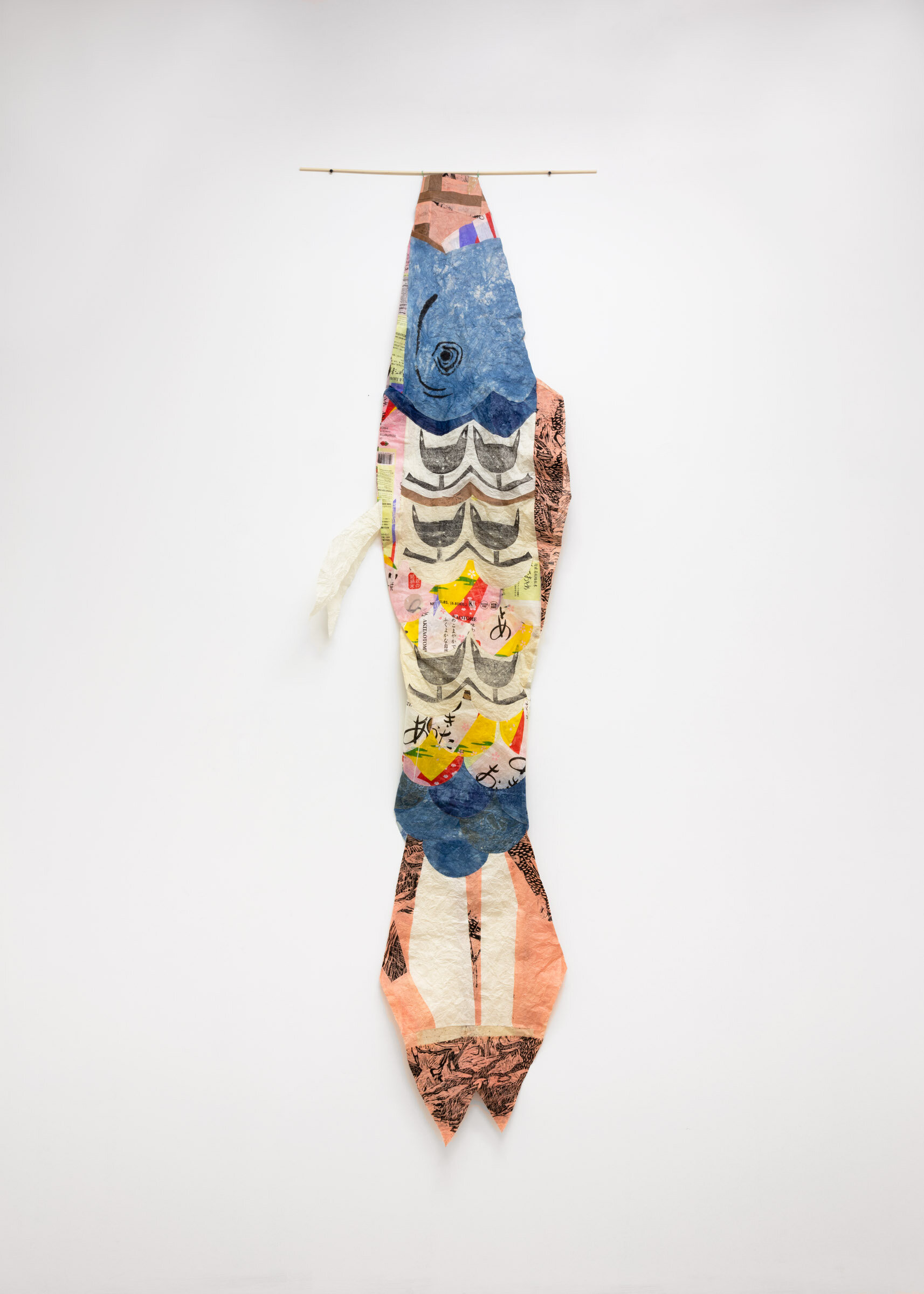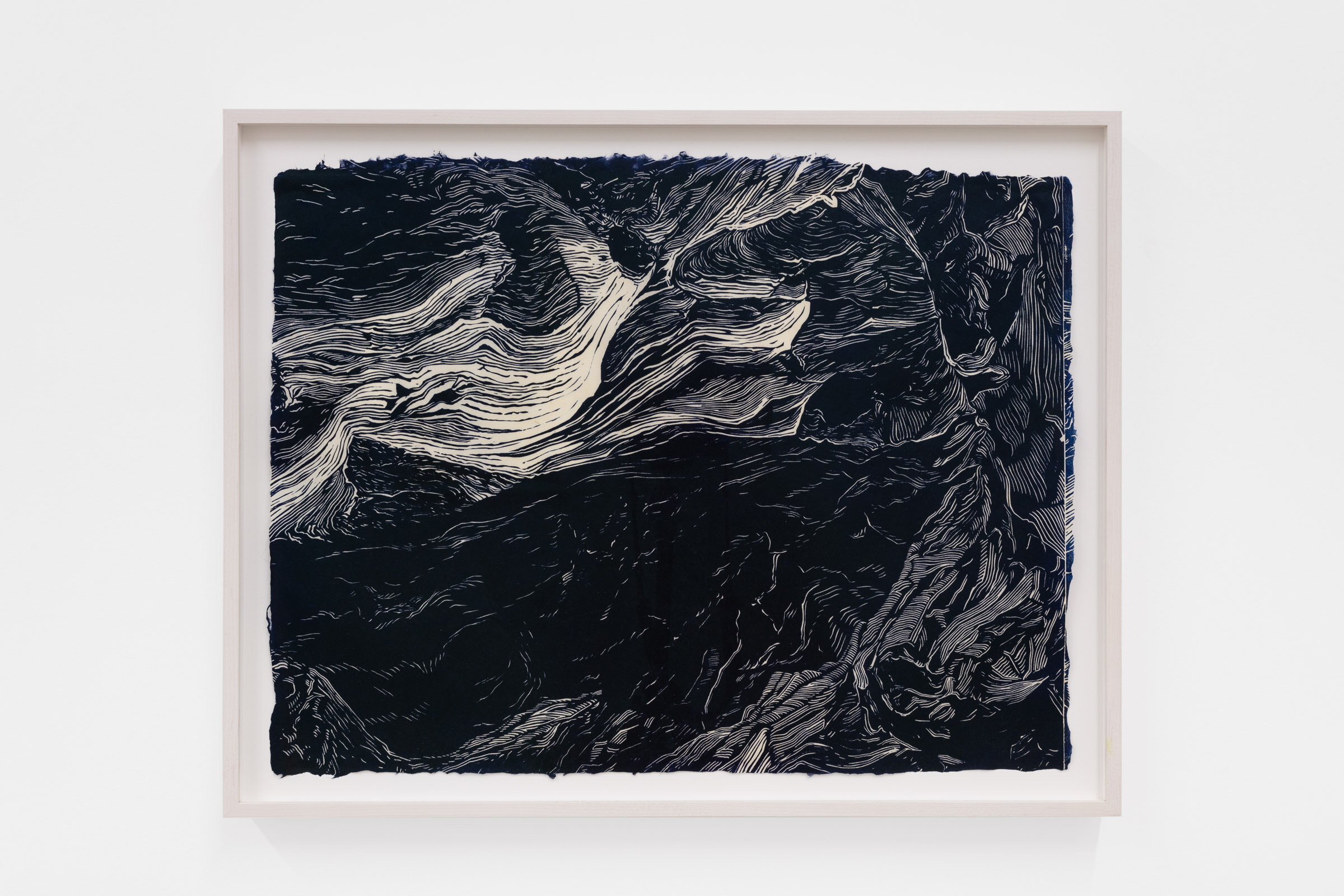Patel brown | 21 Wade Ave
alexa KUMIKO hatanaka | side by each
June 26 - July 31 2021
Patel Brown is proud to present side by each, a solo exhibition by Alexa Kumiko Hatanaka. The exhibition, consisting of relief-prints and kamiko garments constructed with washi paper, weaves the long and delicate threads of paper to manifest ancestral connections and intersecting crises. Hatanaka engages with historical Japanese processes of natural dye techniques as well as paper- and print-making, culminating in works that explore the hybridity of craft methods and how it can be applied to the needs of our current world. This hybridity also mirrors Hatanaka’s Japanese-Canadian heritage. By engaging with processes of making, Hatanaka creates connection and renews relations with Japanese cultural practices and family.
Exhibited throughout side by each are happi coats, shorts, and hazmat suits. Each garment is infused with memories, including sets that resemble clothing Hatanaka’s wore while learning Japanese folk dancing as a child, fragments of paper rice bags collected by her father, and boiler suits dedicated to her grandparents, both of whom wore protective wear while working in factories. Egg Grader's Prayer (Boiler Suit) is printed with carved linoleum portraits of Hatanaka’s grandmother, while Yoshitaka Boiler Suit contains a small ink drawing of her grandfather, father, and uncle in a fishing boat. The gyotaku prints of sumi ink that cover Yoshitaka Boiler Suit employs a Japanese historical technique of printing with real fish, a practice originally used by fishermen, which here intertwines cultural fishing traditions and craft methods within the context of contemporary art.
The conflation of historical Japanese craft techniques and contemporary art is something Hatanaka hones in on while reflecting on her practice. Hatanaka is aware that her art diverges from what traditional Japanese crafts people are doing in the sense that they have dedicated their lives to one thing and to one thing only, whereas Hatanaka is incorporating craft practices into her work as a means to contribute to maintaining them and finding new relevancy. More specifically, Hatanaka is interested in creating intersections, using the hybridity of craft methods to reflect the needs of contemporary life as well as her generation and her mixed-heritage. Examples take form in a Long-cut Hoodie, a reimagining of a contemporary garment with washi and indigo dye, which also honours a past piece Hatanaka created in collaboration with Kinngait youth. All the garments find their shape with the process of Momigami, a traditional Japanese process of naturally starch-strengthening washi common until the 1800s, bolstering the paper to stretch to three dimensions while speaking to the resiliency of paper and its adaptive qualities.
The series 9.0 undergirds much of the imagery found in the hazmat suits woodcuts. Hatanaka made 9.0 in response to the earthquake of that magnitude that struck Japan in 2011. Watercolour fields collide and vibrate into one another while shapes move in a state of flux. The nearby ceramic work, Magnification, alludes to a landscape being ruptured, then pieced together in a way that remains broken, never quite whole again. Hatanaka began making hazmat suits during the pandemic, repurposing the 9.0 woodblocks almost ten years after their creation. Though the earthquake is different from the current pandemic, Hatanaka finds overlaps in meaning and how we understand the world to be interconnected, visualized in topographies of land and waterscapes that undulate across many of her works. As Hatanaka says: “we are never in just one crisis, there are multiple crises overlapping and intersecting all the time.” A past crisis lingers in the title of SHOGANAI, which translates from Japanese to English as “it cannot be helped,” a common cultural phrase that is closely connected to the experience of internment, including that of Hatanaka’s grandparents, which she has thought of often during the pandemic. Beyond 9.0, several works in the exhibition are elaborations on past works, emerging from a process of personal reflection including what can and cannot be controlled during a collective crisis like the pandemic. In side by each, Hatanaka holds many things at once, simultaneously engaging with paper’s transparent vulnerability, protective potential, and adaptive resiliency.
— Clara May Puton
